
Solve two step linear equations in one variable - Algebra Readiness Remediation Plan
- Subject:
- Mathematics
- Material Type:
- Lesson Plan
- Provider:
- VDOE
- Author:
- VDOE
- Date Added:
- 10/07/2024

Solve two step linear equations in one variable - Algebra Readiness Remediation Plan

Solve Two-step Linear Equations in One Variable Formative Assessment - Just in Time Quick Check, Teacher Notes, and Supporting Resources

Solving one and two step linear equations - Mathematics Instructional Plan

Write verbal expressions and sentences as algebraic expressions and equations; write algebraic expressions and equations as verbal expressions and sentences - Mathematics Instructional Plan

Solve One and Two-step Linear Inequalities Formative Assessment - Just in Time Quick Check, Teacher Notes, and Supporting Resources

Write verbal sentences as algebraic inequalities, and vice versa; Solve practical problems involving two-step linear inequalities in one variable - Mathematics Instructional Plan

Students will determine what type of data is needed to answer a question and will use Google Sheets to find patterns. These data skills are needed in many career and academic fields. In addition, students will use input output tables in their daily lives through the use of vending machines, banking, and taking trips to new places. This Performance Task allows them to practice these skills through real-world scenerios.

Set up a 4 corners activity.. Hand out shape pattern cards to all students. For 30 seconds each corner does an exercise corresponding to their first shape, then they will change depending on their second, third, and fourth shape... then they switch through the circuit until they have completed their pattern. They will go through the pattern 2 times.

This lesson incorporates both computer science and mathematics to analyze coding with patterns and proportional relationships. It uses the Turtle library with Python programming.
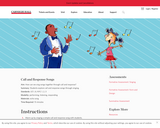
Students explore call and response songs through singing.
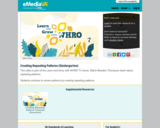
This video is part of the Learn and Grow with WHRO TV series. Watch Brandon Thompson teach about repeating patterns.
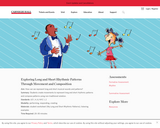
Students create movements to represent long and short rhythmic patterns and compose patterns using non-traditional notation.
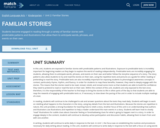
In this unit, students are exposed to familiar stories with predictable patterns and illustrations. Exposure to predictable texts is incredibly important for beginning readers as they begin to explore the world of reading independently. Predictable texts are incredibly engaging for students, allowing them to anticipate words, phrases, and events on their own and better follow the storyline sequence of a story. The story patterns also allow students to try and read the stories on their own, using the repetitive texts and pictures as a guide for either reading or pretending to read the story. Predictable texts are also incredibly important for exposing students to phonological awareness concepts in context, particularly rhyme, rhythm, and fluency. In order for students to reap these benefits, however, they need to deeply engage with the stories. This means that the stories need to be read, reread, retold, and reread some more so that students are able to build the confidence they need to pretend to read or read the text on their own. Within the context of this unit, students are only exposed to the text once; therefore, it is the responsibility of the teacher to find ways to bring the stories to life in other parts of the day so that students are able to reap the rewards of engaging with predictable texts or, if necessary, to slow down the pacing of the unit in order to include multiple readings of a text.
In reading, students will continue to be challenged to ask and answer questions about the texts they read daily. Students will begin to work on retelling what happens to the characters in the story, using key details from the text and illustrations. Because the stories are repetitive in nature, this unit provides a strong foundation for teaching how to retell a story. Another focus of this unit is on understanding how authors and illustrators use illustrations and repetition to help a reader understand the main events in a story. Students will learn how to closely'read' illustrations for subtle clues about character feeling or foreshadowing clues for what is going to happen next in a story. In order to engage deeply in the content, students will continue to develop active participation and discussion habits, allowing them to learn from and with one another.
In writing, students will continue to write daily in response to the text. In Unit 1, the focus was on establishing the routines and procedures necessary for daily writing about reading. In this unit, students will continue to write daily in response to the text with a focus on using words and pictures to correctly answer the question.

Students will be creating their own growing pattern using manipulatives, such as shapes, pattern blocks, or linking cubes. In creating their own growing pattern, students will debug to make sure that their growing pattern is correct. Students will also be given growing patterns with a mistake and they will have to debug to find the error and fix it.

The students will learn about growing patterns and how to connect this mathematical term to a warm-up in music.
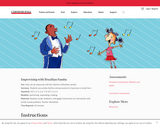
Students use samba rhythms and percussion to improvise in rondo form.

Students will explore with watercolor techniques and collage to design their own character for a book cover. Through an artist study on artist Eric Carle, students will observe and identify shapes in animals and use their painted papers for a collage.

Just in Time Quick Check Patterns

Standard of Learning (SOL) 3.16
The student will identify, describe, create, and extend patterns found in objects, pictures, numbers, and tables.

Standard of Learning (SOL) 3.17
The student will create equations to represent equivalent mathematical relationships.